Specialized Torch 1.0 cycling shoes review
Excellent shoes for the price - though not quite the best
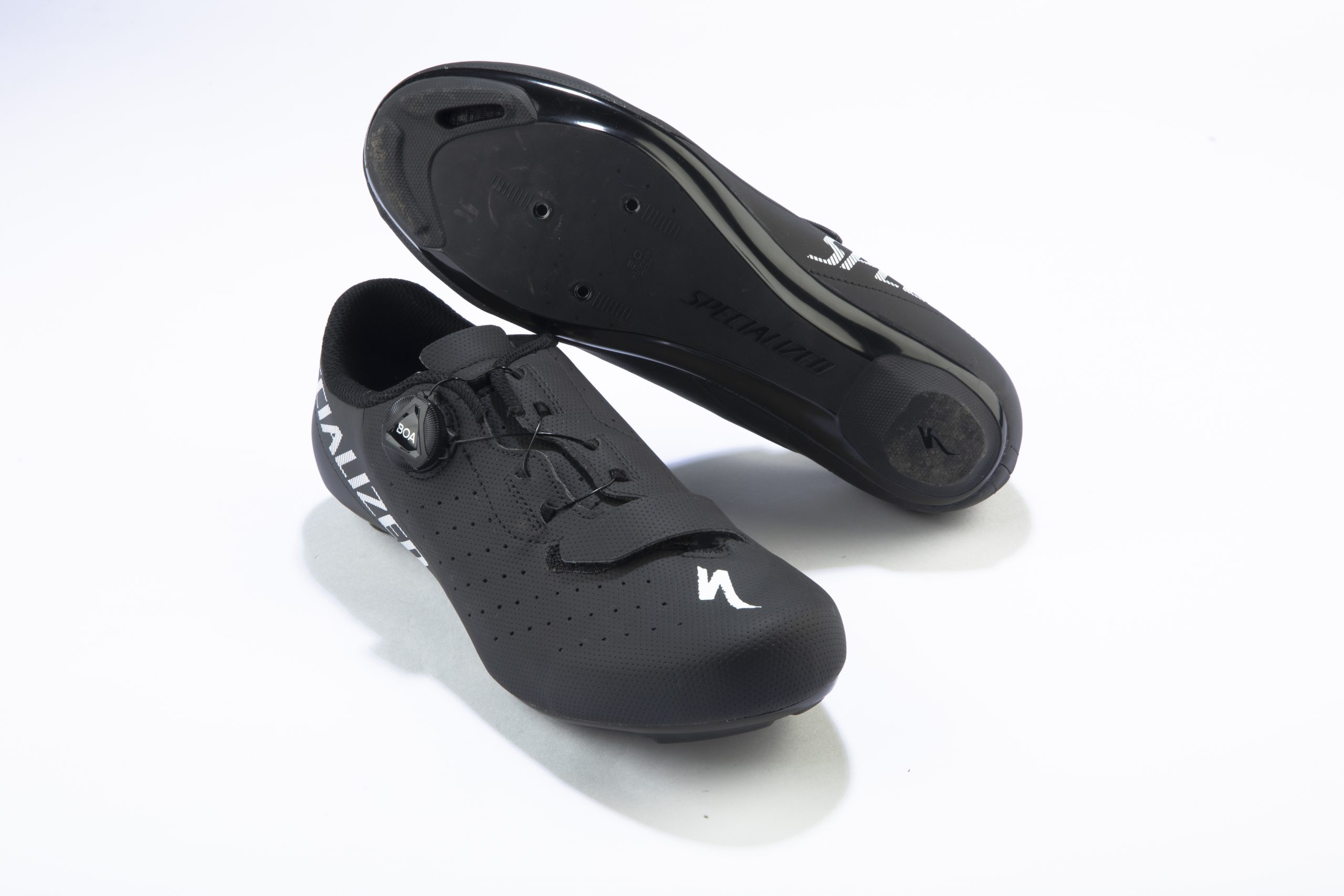
Specialized is able to offer trickle-down technology within its Torch 1.0 shoes with many learnings from the market-leading S-Works 7 kicks clearly present. The fit is good, at this price point, and the sole was plenty stiff enough. The heel hold isn't quite as good as I'd like, and I found that swapping in an upgrade insole allowed the shoe to really shine. Whilst I won't mark the shoes down for the lack of internal support, since no other shoes on test at this price point offer anything better, I do think most riders will get more out of these shoes if they buy them alongside a BG fit insole or similar add-on.
-
+
Sole is stiff enough
-
+
Sleek aesthetic
-
+
Boa dial closure
-
-
Heel support lacking
You can trust Cycling Weekly.

Specialized is a real market leader when it comes to cycling shoes, the American brand is best known for its S-Works 7 shoes, but these retail at a rather jaw-dropping £370. In the Torch 1.0, the purveyors of the big red 'S' branded clothing and bikes aim to bring the basics of the Specialized shoe offering at a much more reasonable price tag: £99.
The Torch 1.0 benefits from trickle-down technology, including learnings from the Body Geometry sector of the company which uses data and research on the human body and how it interacts with the bike. However, the sole is not as stiff and a couple of corners have been cut along the way to bring the price down.
We tested these shoes alongside four other pairs of sub £100 kicks, and the only pair the Torch 1.0's couldn't best were the Dorica's from dhb, with Wiggle's in-house brand able to offer a carbon sole at the same price. However, if you'd rather a Boa dial over laces and want a little more flex via a nylon plate these are an excellent choice.
Specialized Torch 1.0: construction
The Torch 1.0 shoes look strikingly similar to the S-Works 7 kicks. Of course there are differences (those paying £370 would certainly hope so!) but the overall aesthetic is a shared one.
The Torch 1.0 still uses a Body Geometry sole, with footbeds designed to offer support to the arch of the foot, therefore aiding alignment to the knee and hip. The footbed itself is shaped, though it is very flexible when compared with more structured footbeds the brand offers (more on that later).
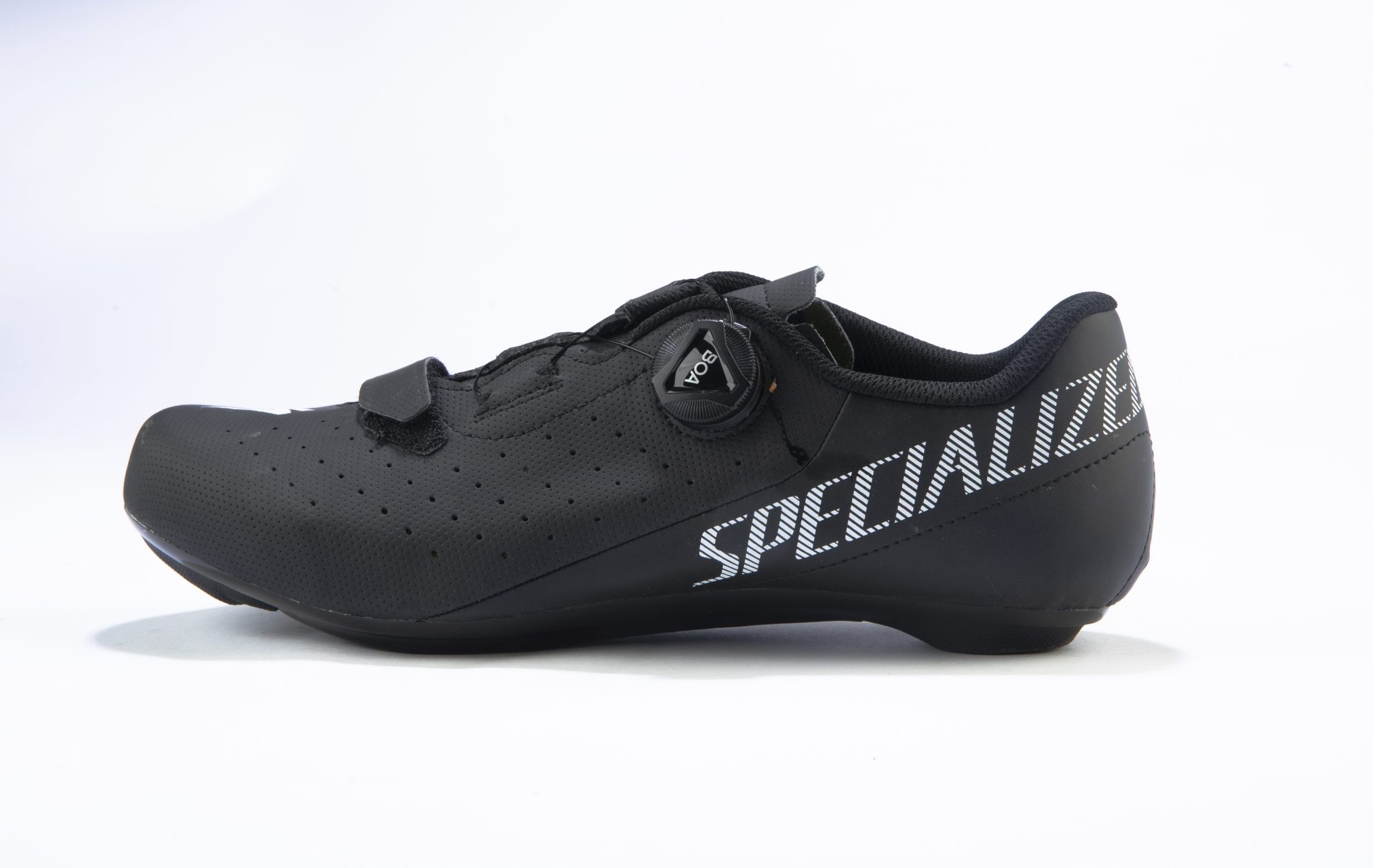
Like many shoes at this price point (with the dhb Dorica Carbon the only exception, of those we had on test), the sole is predominantly nylon which has been injection moulded. On the brand's own 'stiffness scale' it comes in at '6', the scale is specific to Specialized, but for comparison's sake the S-Works is a '15'. The Torch 1.0 sole is therefore about a third as stiff. Whilst it's not as sturdy a platform to sprint from, I found it more than up to the requirement for endurance rides and training sessions - attempting to flex it between my hands I found it moved less than the Giro Stylus also on test, a lot less than the Shimano RC3 and about in-line with the Bontrager Starvos.
The insole supplied with these shoes is shaped with some slight arch support, but it's not a rigid construction and is easily bent in half. This style is similar to that used in the Starvos shoes, whilst the Stylus has a completely flat and unformed insole.
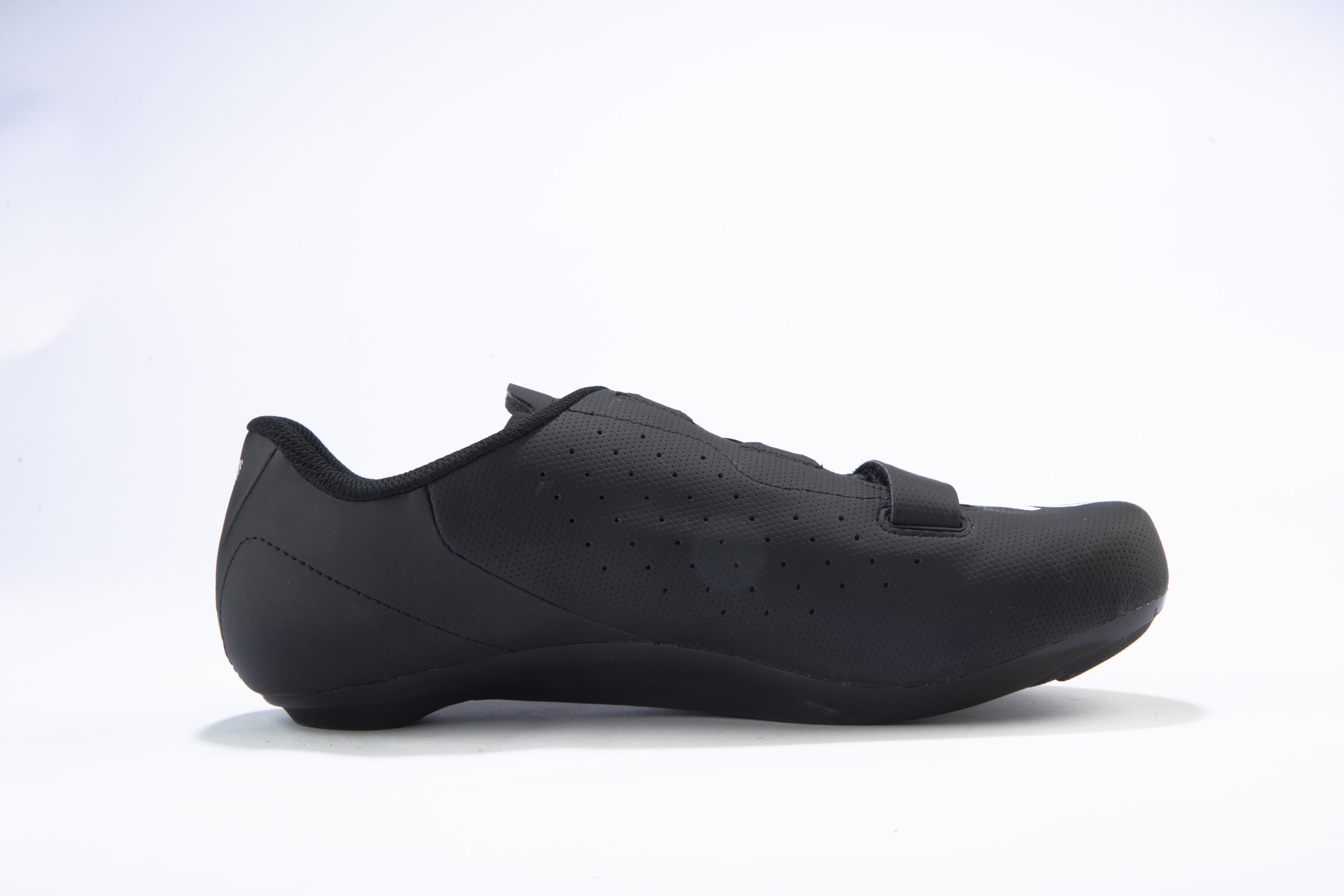
Specialized has used a Boa L6 dial: this offers micro-adjustment for tightening, though needs to be popped up completely if you want to loosen it. The Boa closure offers significantly better closure than the Bontrager and Giro models on test, which both use Velcro. Speicalized has used a small Velcro tab at the front of the shoe, the same way it does with its top end models, but I didn't adjust this and I doubt many riders do.
The upper is synthetic, with mesh venting. It's not as supple as the S-Works 7, and the heel is also much more padded with a less shaped fit, meaning whilst padding can help prevent chafing, it doesn't hug the ankle as well.
The sole features adjustment markings to help with cleat fitting, and there's some reflective details at the heel. My size 40 come in at 242g; sizes range from 36 to 49, with half sizes available, and colours include red, white, blue, black, yellow and grey.
Specialized Torch 1.0: the ride
Having tested both the Bontrager Starvos shoes and the Giro Stylus shoes, I was amazed that the Torch 1.0 model from Specialized comes in at the same price. The Boa dial offers a significantly firmer fit, with less excessive wiggle room available as I found elsewhere. Some riders could find this more conforming fit too restrictive - but if you're after performance, this will provide a firmer hold and aid power transfer.
The fit at the ankle was a little less impressive, it's heavily padded and didn't hug my heel as I'd like it to. This meant that in order to achieve a firm hold, I found myself cranking the dial down that bit harder than I'd like to, so it's an area for improvement. However, I didn't notice any slipping under pressure at the heel as I did in other shoes at this price point.
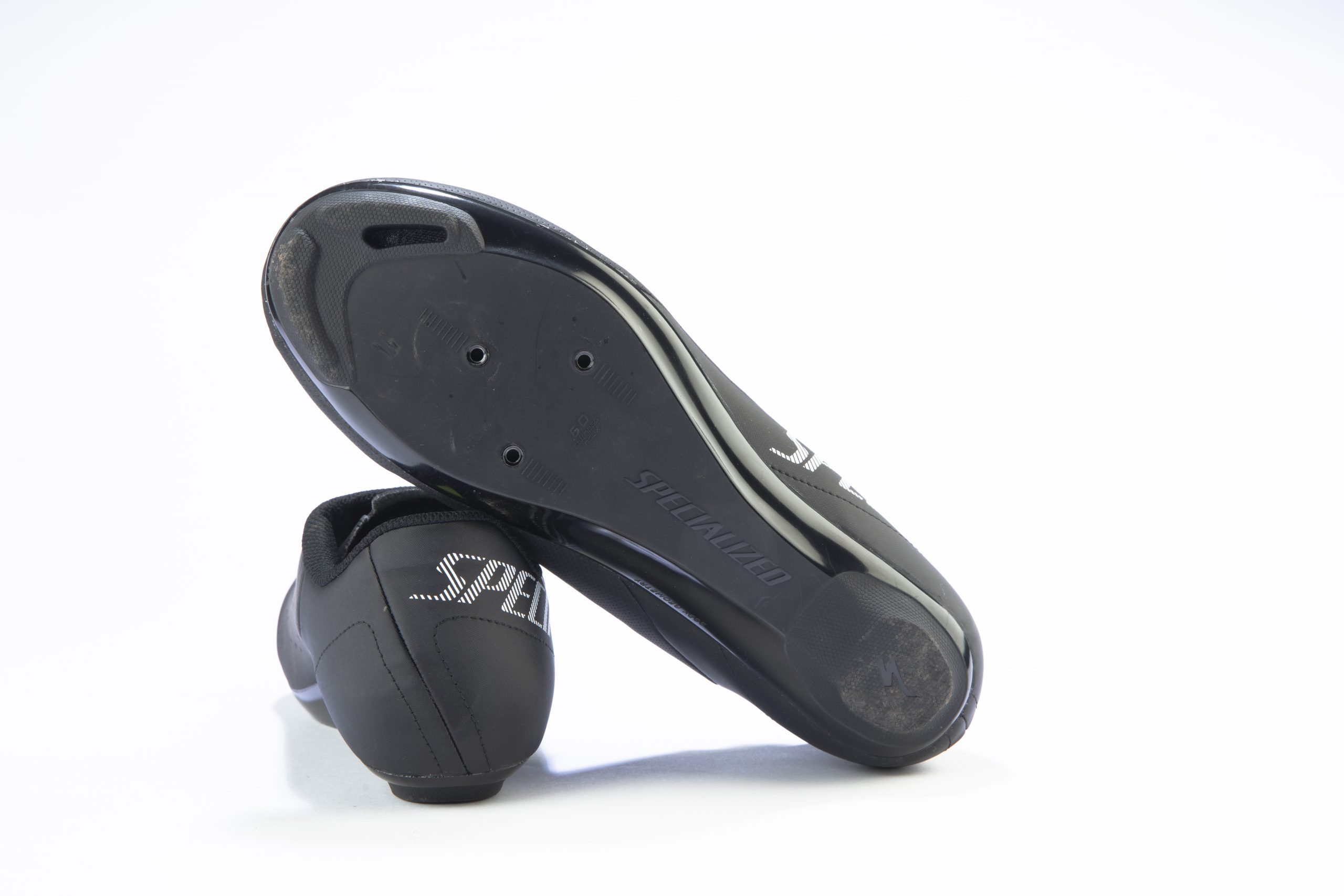
I started testing the shoes with the supplied insole, and felt my feet were quite unsupported in the shoe. Swapping in a pair of Body Geometry (Blue) insoles from Specialized (RRP £30) made a world of difference. In fact, the FTP intervals I was attempting to complete on the rollers suddenly felt much more achievable. The amount of support a rider requires inside their shoe is quite individual, but it is worth investigating a firmer insole if you feel you might benefit.
Out on the bike, the sole felt stiff enough for me. I might want a little more rigidity for racing, but by the same token I have once experienced numb feet due to the extreme stiffness of the S-Works 7 after a 6+ hour ride. A little flex does bring with it some benefits over long endurance efforts.
Value
At £99, the Specialized Torch 1.0 shoes provide many of the benefits of more expensive shoes within a much more budget-friendly package. The sole is as stiff as Bontrager's offering, with a better closure system, and it's better all round when compared with the Stylus from Giro. The only shoe on test that beats the Torch 1.0 is the Dorica from dhb, which benefits from a carbon sole.

Thank you for reading 20 articles this month* Join now for unlimited access
Enjoy your first month for just £1 / $1 / €1
*Read 5 free articles per month without a subscription

Join now for unlimited access
Try first month for just £1 / $1 / €1
Get The Leadout Newsletter
The latest race content, interviews, features, reviews and expert buying guides, direct to your inbox!
Michelle Arthurs-Brennan the Editor of Cycling Weekly website. An NCTJ qualified traditional journalist by trade, Michelle began her career working for local newspapers. She's worked within the cycling industry since 2012, and joined the Cycling Weekly team in 2017, having previously been Editor at Total Women's Cycling. Prior to welcoming her first daughter in 2022, Michelle raced on the road, track, and in time trials, and still rides as much as she can - albeit a fair proportion indoors, for now.
Michelle is on maternity leave from April 2025 until spring 2026.
-
 Full Tour of Britain Women route announced, taking place from North Yorkshire to Glasgow
Full Tour of Britain Women route announced, taking place from North Yorkshire to GlasgowBritish Cycling's Women's WorldTour four-stage race will take place in northern England and Scotland
By Tom Thewlis Published
-
 Positive signs for UK bike industry as Halfords cycling sales grow
Positive signs for UK bike industry as Halfords cycling sales growRetailer admits that the impact of Donald Trump's tariffs remains to be seen
By Tom Thewlis Published
-
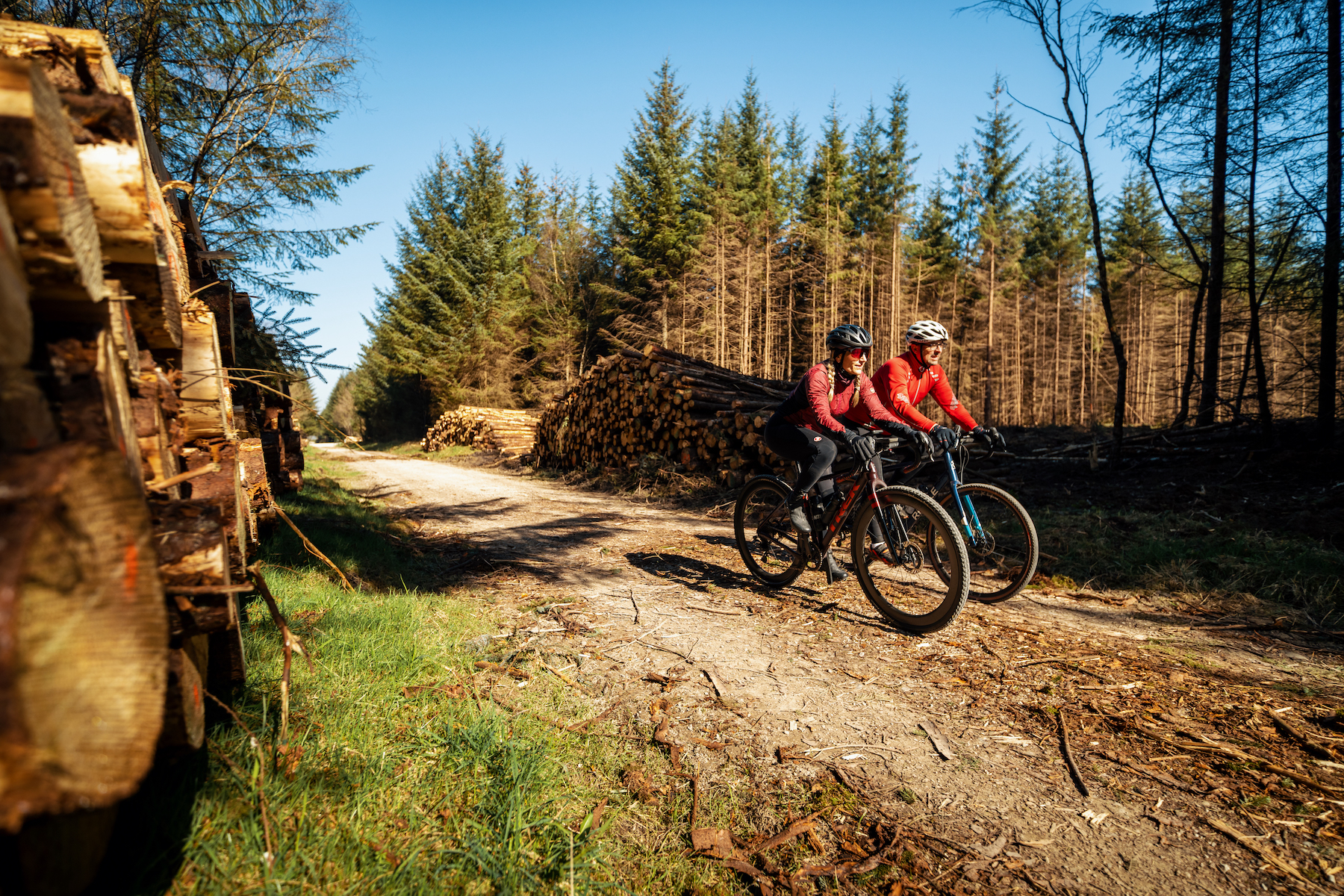 'We don't own gravel - it's a community thing': the spirit of gravel is safe, say British Gravel Championship organisers
'We don't own gravel - it's a community thing': the spirit of gravel is safe, say British Gravel Championship organisersCycling Weekly travels to Dalby Forest to ride the championship course and find out where we go from here
By James Shrubsall Published